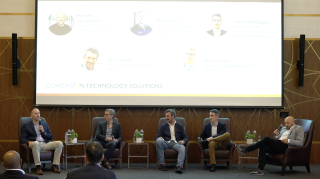Self-Service Advertising: Reimagining advertising in the U.S.
June 14, 2019
Self-service advertising models are bringing transparency, control and efficiency to the forefront of the international market. While here in the United States, we typically opt for managed-solutions – a distinction changing fast due to the rise in self-serve digital platforms.
Running campaigns through fully-managed platforms puts the responsibility and control in the hands of a third party. Someone else uploads creative, makes changes or optimizations, and sends back insights. For those with limited time or resources, this can be the right option.
However, for those with the appetite, a self-service advertising platform capable of navigating an entire campaign lifecycle, from planning to execution and reporting, presents major benefits.
We’ve seen the use of self-service advertising platforms for demand and supply-side platforms increase as knowledge and expertise has increased. Agencies and brands now directly use these platforms to deploy and manage advertising spend and activity.
Why Self-Service?
The self-service model empowers advertisers to create and change assets quickly, deliver ads in near-real time, and take control of campaign workflows from start to finish. By limiting the number of hands touching any given campaign, self-service offers increased brand safety, as well as deeper insight into each part of the workflow.
For agencies, manually executing campaigns and working with each advertiser individually can be costly. Automating the process cuts down on time and resources. In addition, self-service can help build links between media agencies, post houses, creative agencies and clients as they work together in a shared platform.
In 2017, IAB commented on the rising trend of self-service models in their annual Internet Advertising Revenue Report saying, “of the roughly 9 million small and medium-sized businesses in the U.S., 75% or more have spent money on advertising. Of these, 80% have used self-service platforms, and 15% have leveraged programmatic advertising. These findings point to significant ad spend going to publishers with these capabilities, and presents a growth opportunity for those that can add self-service and programmatic geared to these businesses into the mix.”
Barriers to Change
I hosted a February 2019 IAB panel discussing how self-service can help solve the complexity of disparate workflows. Peach, an advertising partner of Comcast Technology Solutions, delivers millions of ads every year to more than 100 countries internationally, where the adoption rates for self-service are the opposite of what we see in the U.S.
“We’re up at 98% self-service. So, pretty much everything is self-service internationally,” Peach Head of Enterprise Sales Alex Abrams said during the panel discussion. “In the States, it’s probably 98% managed-service. It creates inefficiencies and barriers to move into 24/7 automation.”
Peach transitioned from managed-service to self-service about four years ago, when automated workflows and technology made it possible at scale. The U.S. market has been more reluctant.
Owning the workflow
Justin Morgan, Senior Director of Marketing Automation at Comcast, described the impetus for a self-service approach, expressing the market’s desire to create efficiencies by having control over each portion of the workflow.
“I think there is a wave of companies wanting to own their data. Own some production elements. Own really anything they can,” Morgan said during the panel discussion. “Put simply, I can either give direction to a company to put something in implicitly, or I can just put it into the system myself. Obviously, the latter is more efficient and faster, and probably cheaper.”
“We should have all of that at our fingertips. So, from that perspective, everything we are doing now is really to move toward a self-service model,” Morgan said.
The evolution toward self-service may be daunting to some, but there has never been a better time to rethink your strategy.
According to the most recent IAB Internet Advertising Revenue Report, digital video advertising revenue reached $7 billion in the first half of 2018, up 35% from the previous year. Cisco estimates by 2021, 80% of all the world’s internet traffic will be video.
In addition, research from Digital Content NewFronts’ 2019 Video Ad Spend Report showed brands expected, on average, to increase spend by 25 percent to $18 million on digital video in 2019—with nearly two-thirds (59%) of ad buyers saying they planed to increase their advanced TV spend.
The U.S. market is poised to reap the benefits of a model designed to reduce complexity and cost while optimizing the revenue potential of each piece of content.
Global trends toward reducing inefficiencies, enabling automation, and taking control of each part of the workflow are indicators of the growing domestic opportunity for these services and for self-service advertising solutions.
Learn more about how Comcast Technology Solutions self-service innovations can reinvent your advertising workflow.




